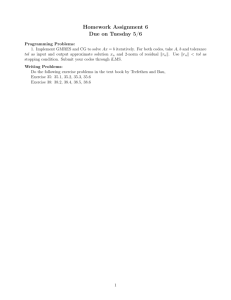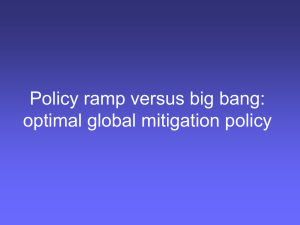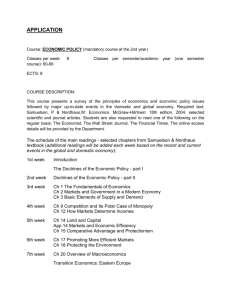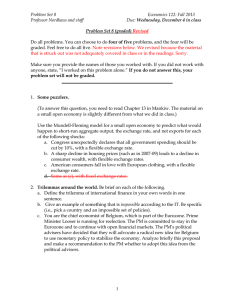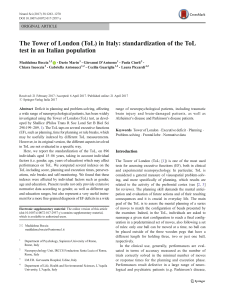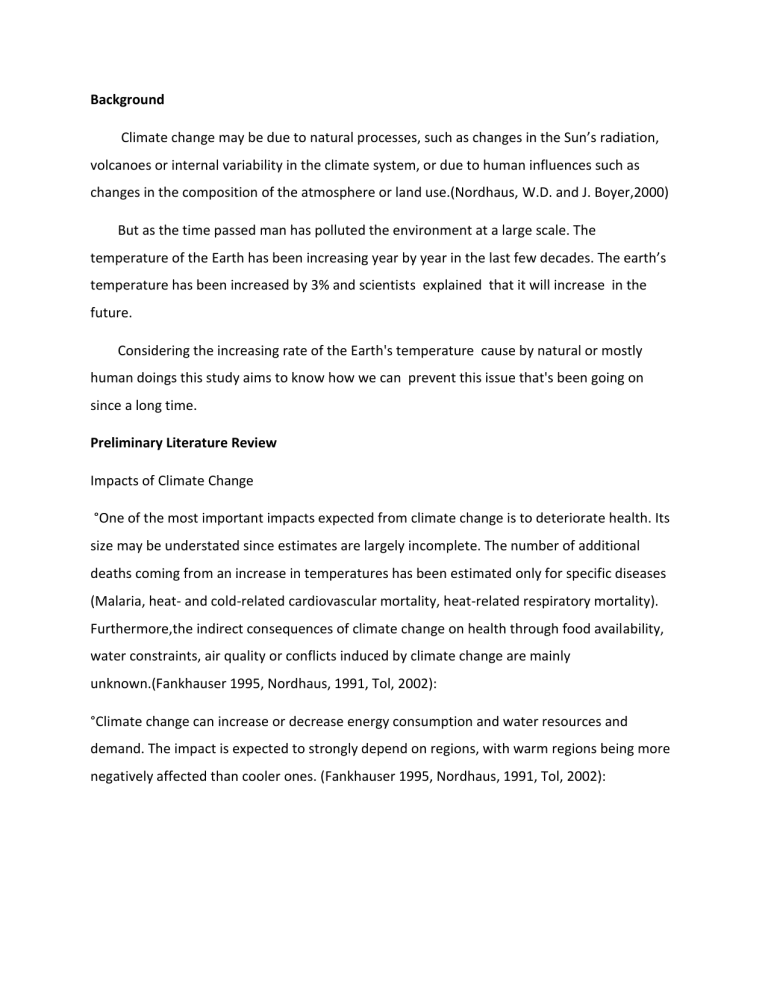
Background Climate change may be due to natural processes, such as changes in the Sun’s radiation, volcanoes or internal variability in the climate system, or due to human influences such as changes in the composition of the atmosphere or land use.(Nordhaus, W.D. and J. Boyer,2000) But as the time passed man has polluted the environment at a large scale. The temperature of the Earth has been increasing year by year in the last few decades. The earth’s temperature has been increased by 3% and scientists explained that it will increase in the future. Considering the increasing rate of the Earth's temperature cause by natural or mostly human doings this study aims to know how we can prevent this issue that's been going on since a long time. Preliminary Literature Review Impacts of Climate Change °One of the most important impacts expected from climate change is to deteriorate health. Its size may be understated since estimates are largely incomplete. The number of additional deaths coming from an increase in temperatures has been estimated only for specific diseases (Malaria, heat- and cold-related cardiovascular mortality, heat-related respiratory mortality). Furthermore,the indirect consequences of climate change on health through food availability, water constraints, air quality or conflicts induced by climate change are mainly unknown.(Fankhauser 1995, Nordhaus, 1991, Tol, 2002): °Climate change can increase or decrease energy consumption and water resources and demand. The impact is expected to strongly depend on regions, with warm regions being more negatively affected than cooler ones. (Fankhauser 1995, Nordhaus, 1991, Tol, 2002): The literature also suggests that there is a large range of uncertainty surrounding these estimates. First, physical impacts are only partially understood. The incompleteness of estimates is an upward risk (regarding health and extreme events for instance). Statement of the problem The main problem statement of the study: " What are the measures we can do to prevent this climate change?" Objectives ° to determine the effects of this phenomena °to determine the solutions to consider to prevent climate change. Methodology 1. Renewable energies Changing our main energy sources to clean and renewable energy. Solar, Wind, Geothermal and biomass could be the solution. 2. Sustainable transportation Our transport methods must be aligned with environmental requirements and reduce their carbon footprint. It is essential to rethink our transport methods from the design stage towards eco-friendly transportation. 3. Air pollution prevention Many methods exist to prevent, control and reduce air pollution, in particular by reducing the consumption of fossil fuels, and limiting industry emissions and waste. 4. Waste Management & recycling The simplest solution to reduce waste is to adapt our production methods to our consumption patterns. The recycling process must also be taken into account in our consumption habits. 5. Sea and Ocean preservation Oceans and seas are the largest storage of greenhouse gases and are an exceptional support system for life on this planet. Limiting overfishing, unsustainable development activities in coastal areas and the consumption of environmentally friendly products is now essential. 6.Circular economy Use the 3 r's of circular economy (Reduce, Reuse and Recycle) to significantly reduce our waste and avoid unnecessary production of new items. Timeline References Fankhauser, S., R. Tol and D. Pearce (1997), “The Aggregation of Climate Change Damages: A Welfare Theoretic Approach”, Environmental and Resource Economics 10: 249–266. Nordhaus, W.D. and J. Boyer (2000), “Warming the World: Economic Models of Global Warming, The MIT Press, 2000 CLIMATE CHANGE: EFFECTS AND PREVENTION Joverose M. Villamor San Jacinto National High School January 18, 2021
